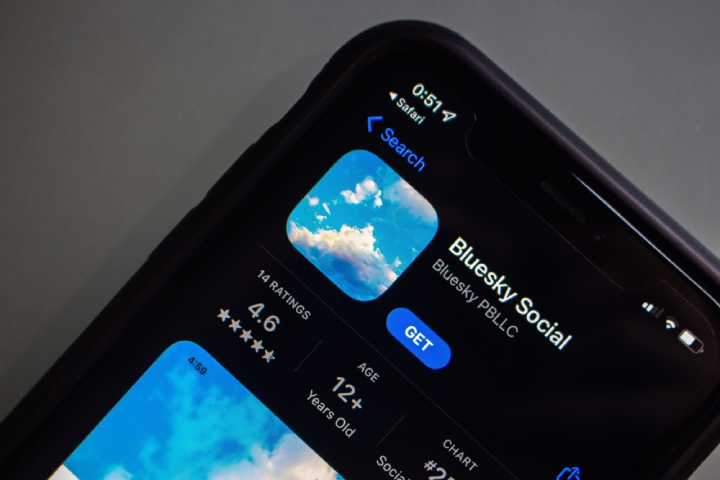
Since Elon Musk announced his $44bn purchase of Twitter, now rebranded X, at the end of 2022, several other major tech and social media companies including Meta have launched new platforms to make a challenge for Twitter’s market share.
While Mastodon, T2 and Threads have all enjoyed some success, another social network which could make an impact is Bluesky.

But what is Bluesky, and how different is it from Twitter?
What is Bluesky?
Bluesky is the brainchild of former Twitter CEO Jack Dorsey and, like Mastodon, is designed as a decentralised social app. The appearance of the app itself is really similar to Musk’s, and it is built on an open-source framework called the AT Protocol.
The idea behind this platform was first introduced in 2019 by Dorsey as a side project, running alongside Twitter. Initially, it was supposed to be managed by a “small, independent team of up to five open source architects, engineers and designers”, but, since Musks’s Twitter acquisition, Bluesky and its team completely detached from the parent app.
The Bluesky app showcases its users with the format of @username.bsky.social and the feed looks almost exactly like Twitter’s. A user can create posts with 256 characters and include photos, which can also be retweeted, favourited, shared and commented. Instead of the “What’s happening?” asked by Twitter, Bluesky asks “What’s hot?”, which also includes the top-engaging posts.
As a decentralised social media, Bluesky is fully controlled by the users, who impact the algorithm. Users “will be able to label posts or specific users — e.g., with a tag like ‘racist’ – and anyone can subscribe to that list of labels, blocking posts on that basis”, Wired reported earlier this year.
With further developments in the AT Protocol, Bluesky’s networking technology based on a federated system, users will be potentially able to move their accounts from one social network to the other without losing data or social graphs – unless the followers do not have Bluesky – or saved content, but this function has not been experimented with yet.
The AT protocol is a vital element in Bluesky’s structure since it is a melting pot of all the most recent decentralised technologies. As an open federated network, this protocol allows different servers to communicate, almost like exchanging emails. There are four main characteristics that make the AT protocol unique: account portability, as mentioned before, which allows the user to change platforms without losing their social graphs; algorithmic choice, which lets the user have complete control over what they see and interact with; interoperation, with a focus on coordination challenges; and performance, to allow a smooth operation even in bigger scales.
Thanks to the AT protocol, Bluesky says subscribers can choose the platform’s provider or self-host their network, which may prove a useful feature for businesses.
Is Bluesky the new Twitter?
When it comes to functions, Bluesky is very similar to Twitter. However, there are some differences.
For instance, the new addition does not include DMs or lists in its portfolio. Furthermore, Bluesky is decentralised while Twitter is not. As Dorsey’s platform also includes posts, Bluesky’s users decided to refer to them as ‘skeets’, a mixture of ‘tweets’ and ‘sky’, while the timeline is called ‘skyline’.
So is Bluesky the new Twitter? Not yet. For now, the new social platform works on an invitation-only basis, which means that there is a substantial difference between its and Twitter’s number of subscribers, present or future. Out of almost 2m people on the waitlist, there are only 370,000 registered users. On the other hand, as of December 2022, Twitter recorded over 400m monthly active users.
The reason behind Bluesky’s model only working on a subscription basis is to prevent a large influx of visitors and the consequent sudden loss of interest. This way, the app can ensure steady and organic audience growth.
How do I get invited to Bluesky?
Bluesky’s invitation system is already so popular that the access keys, the unique codes used to join the platform, are already being sold on eBay for up to $135, with some listings even going beyond that. It is apparent that Bluesky’s objective is to only let in people who are actually interested in the social network, rather than risking loss of popularity caused by problematic subscribers.
In order to join the Bluesky community, which many have described as friendly and almost like a group chat, one must join the waitlist from the website and wait for a confirmation email. However, that is not the only method. Indeed, people who are already registered on the platform can share invite codes.
Nevertheless, a big factor to count in the popularity of Bluesky is its exclusive feel, also enhanced by the presence of several celebrities such as model and actress Chrissy Teigen and US politician Alexandria Ocasio-Cortez.






